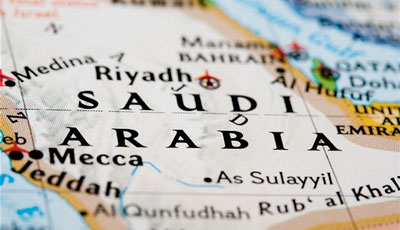Oil’s Drop Puts Spotlight on Saudi Arabia

Some OPEC members call for renewed discussions within cartel about restraining production
The plunge in global oil prices has eroded an important pillar of Saudi Arabia’s strategy of pumping freely to grab global market share: Demand growth that once looked solid doesn’t look so steady anymore, mainly due to concerns about China.
That has again raised a question at the heart of oil markets for more than a year: Could the world’s largest exporter of oil move to restrain production in hopes of stabilizing prices?
Even before the general market rout extended into Monday, falling oil prices had sparked renewed calls from Algeria for the Organization of the Oil Exporting Countries to reverse course and discuss production cuts.
On Monday, Iran, another OPEC member, said it would welcome an emergency meeting of the group, even as it restated vows to boost its own production as soon as international sanctions are lifted, possibly later this year.
Those calls are aimed directly at Saudi Arabia, the only country capable of leading an effort to restrain production. Even Saudi Arabia’s short-term fortunes are taking a beating. The country is now expected to run a budget deficit as large as $150 billion, or about 20% of its gross domestic product, this year, compared with only 3% last year, according to the International Monetary Fund.

Saudi Arabia hasn’t commented officially or shown signs of a change of heart.
“Even if prices fall further, OPEC won’t cut,” said one Saudi industry official on Monday.
Brent crude, the global oil benchmark, dropped 6.1%, to $42.69 a barrel, on ICE Futures Europe on Monday, its lowest settlement price since March 2009.
Saudi Arabia’s determination to keep pumping away had largely been focused on how the resulting lower prices would whittle away at supply as higher-cost projects are delayed and canceled. That is happening, though far less quickly than many predicted.
But the other pillar of the Saudi strategy is that demand would increase steadily in response to lower prices. That, so far, has been taken almost for granted. The International Energy Agency this month said total demand accelerated almost sixfold from the first half of last year to the same period this year, as the global economy expanded and consumers used more of the cheaper fuel.
Demand for oil in China, which accounted for 40% of all demand growth from 2000 to last year, has long been expected to slow, from 3.6% this year to 3.2% next year, according to the IEA.
Yet the IEA also raised its estimate for Chinese demand in the second quarter of this year, noting stronger-than-expected demand for petrochemical production and transportation.
Still, the IEA forecast weaker demand for many products in the second half of the year, a trend some worry is accelerating faster than many expected.
Given the Chinese government’s recent actions to support the economy, “they are definitely signaling to the market that there are issues internally,” said Marcus McGregor, an energy analyst at Conning & Co., which manages about $92 billion in assets. “We just think that it’s a negative in terms of consumption.”
Pressure on Saudi Arabia could build.
“Yes, prices are volatile now, but they have been volatile earlier this year so why change course now,” said one OPEC delegate. “We should at least wait until the end of fourth quarter to see what happens with demand and with Iran.”
The world’s largest exporter of oil accelerated a decline of crude prices last November when it decided to aggressively pump even more oil into an already oversupplied market. That set off a global production race, further expanding supply and filling storage tanks around the world.
The strategy was deliberate: Scramble for market share now, so when supply tapers off later as high-cost producers cry uncle the kingdom, and any others left standing, reap the rewards of increasing demand. The problem now: Demand, at least in the world’s biggest consumer of oil, China, may not increase anywhere near as fast as expected.
Saudi Arabia’s veteran oil minister, Ali Naimi, gave fellow global oil producers—even within OPEC—little say in the country’s decision to, essentially, compete all-out for market share since last November.
The subsequent step-up in Saudi Arabia was echoed by the United Arab Emirates, Kuwait and Iraq. Price declines have taken their toll on producing countries all over the world. But the pain on producing countries—even within OPEC—hasn’t been evenly distributed.
The U.A.E. recently reduced subsidies on gasoline, raising the price on consumers while saving the government money, with little fanfare. But even some of these countries, such as Oman, are approaching the limits of what they can handle without experiencing real pain.
Saudi Arabia will be loath to change course, said analysts who follow the kingdom’s oil policies. That is partly because it still retains a large cushion of savings. Those stood at $664 billion in June, although that is 9% below a year earlier.
“In terms of oil busts, it’s still early days,” said Jim Krane, a fellow with the Baker Institute at Rice University.
Source: WSJ – Oil’s Drop Puts Spotlight on Saudi Arabia





























